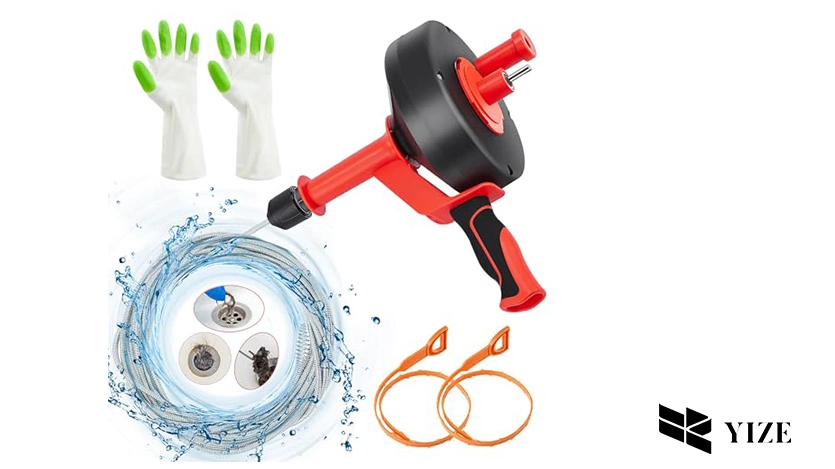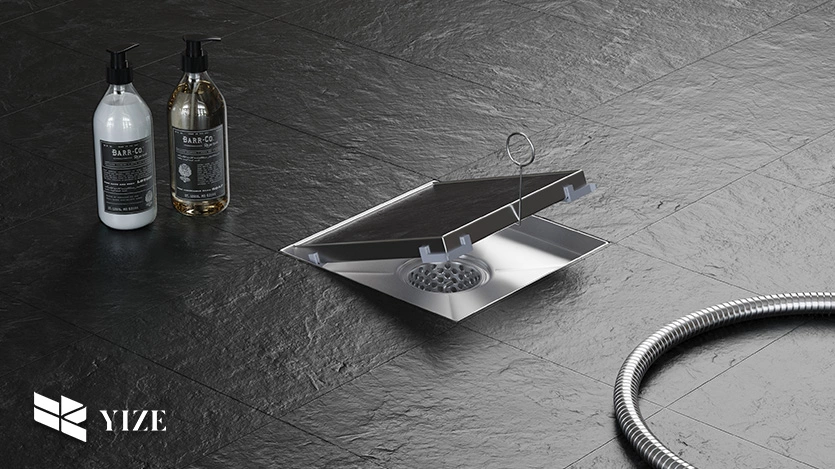
I. Introduction
A recessed shower drain is designed to provide a hidden line with a unique, simple appearance and a perfect drain for the water. As with any plumbing fixture, they are also with different considerations though. Some challenges that are associated with it may include blockage, improper fitting, and even degradation which may be inconveniences to the user. These are some of the common issues that one must solve with recessed shower drains because they will make the shower area messy and the drain useless. This article will make sure that you are aware of the most common problems that may occur around recessed shower drains and how to address them.
II. What Are the Problems with Recessed Shower Drains?
Recessed shower drains provide an elegant solution aimed at handling water at any shower zone. However, several problems may be encountered by such organizations every now and again. Below are some of the most common issues:
1. Clogs and Blockages
Small fat droplets may cool down at the floor of the drain and combine with such things as hair, grime, and soap scum to block the drain. This causes water to pile on the floor of the shower area; this leads to an odd range for showering at the same time it fosters mold and mold growth.
2. Improper Installation
This is because a poor installation method results in the drain being installed in an improper way; therefore they end up being installed in an unlevel drainage system. In case the drain is not straight, then, the water will not follow a smooth path and this will result in water standing on the floor and even water damage.
3. Corrosion
The drains that are made from metals or any other softer material are typically affected by corrosion from water, soap and other chemicals. This may lead to the weakening of the strapping of the drain through which water is supposed to be drained, making the drain less efficient.
4. Bad Odors
There are some situations when such a smell appears, for example, if the rain is not sealed well, or it is blocked. And this can happen when the pipes are halted when the water is trapped when it is left to stand in the pipes or when mold is formed at the interior of the pipes.
5. Slow Drainage
Forked, if the drain does not clear water they are a partial blockage, or the pipes were laid incorrectly in regard to the alignment of the gravity flow. This can be consequently accumulated inside the pipeline or it might be because of the improper fixation of the drain pipe so that through which water cannot come out freely.
III. How Do You Remove a Recessed Shower Drain?
At some point, this might call for removing the recessed shower drain as a method of cleaning or fixing the bad parts. Here’s how to do it safely:
Step-by-Step Process
- Turn Off the Water: That means ensuring that there is no water supply in the area before beginning the work and that there are no signs of water accidents.
- Clear the Area: While working, there should be no items in your shower therefore get rid of shower mats and anything that may be a hindrance.
- Loosen the Screws: The usual type of shower drain is called recessed shower drain, and it is mentioned to feat screwing so this is probably, regularly going to be a screw type kind This is called the screw kind which is considered to be among the most popular kinds of shower drain. Screw around the drain cover; now you can then unscrew it using the screwdriver or the drill.
- Lift the Drain Cover: Lift the lid of the recessed drain very gently. Once the container is stuck you may be left with no option than to use a flathead screwdriver to pry it open as seen above.
- Remove the Drain Assembly: Depending on the model, you may have a drain assembly that is screwed in even further once the cover has been removed. Remove those screws, and then the drain assembly should be pulled over. If it is jammed, normally, one can twist it slightly until it shifts into the right position again.
- Clean the Drain: If not, wash the drain then take it out once again. If you still make out areas with soap scum, mold, or any other kind of build-up, wash the areas with a brush or drain cleaner.
- Replace or Repair: If the drain assembly is in question, then you will have no option to replace it. I would be wiser to re-install as the manufacturer suggested in their guideline for its installation.
IV. How Do You Fix a Recessed Shower Drain Block?

A shower drain that is clogged or blocked poses a problem, especially for the entire drain system. Here’s how to unblock it efficiently:
Measures for Elimination of a Blockage in a Shower Recessed Drain
- Boiling Water: First, turn the tap on then open the upper faucet and let a kettle of boiling water go down the drain. This is likely to help to loosen hardness causing soap scum and greasy deposits in any case if the blockage is being caused by these.
- Use a Plunger: Sometimes, to enhance the result of the operation anther process was applied simultaneously; in case it is impossible to overcome the obstacle having a hose and pouring hot water continuously, there is always a plunger. Make sure that you align the plunger well over the drain then plunge severally in other to clear the debris.
- Baking Soda and Vinegar: For a mild case, down the drain pour half a cup of baking soda and then follow this with half cup of white vinegar. It is then allowed to set for 15- 20 minutes then washed off using hot water. These both can help in clearing the drain deposits that cause blockages in the drain pipe.
V. How Do You Unblock a Recessed Shower Drain?

Here’s how to tackle this situation:
Tips for Unblocking a Recessed Shower Drain
- Check the Drain Cover: It can also actually settle on the debris, as you will see in the attached image sometimes. Now remove the lid and try to find what blockage you can see with your naked eyes.
- Use a Wet/Dry Vacuum: A wet & dry vacuum cleaner is ready to eradicate difficult substances that may still persist after every clean-up. Place it over the drain with the help of a power switch turned on to uptake wet material. It should pull out accumulated hair and other debris from the drain.
- Use a Manual Auger: Manual augers are useful in breaking clogs that have moved to some amount of depth that other tools cannot regain. Fortunately, an auger is easy to use: through the aperture provided on the handle of the drainage unit and then merely tightening it until the stopper is in place. So you are just to continue twisting in order to get the clog to free.
- Clean the Trap: In case debris is a cause of the clogs then you may be forced to disconnect the P-trap, which is the curved pipe just below the drain then clean it. The preparation of this type usually entails, some plumbing skills most of the time.
VI. How Do You Maintain a Recessed Shower Drain?
Maintenance also contributes to the fact that the drain can become rusty and also contributes to the fact that it has to be serviced more frequently than by its wear.
Simple Maintenance Tips
- Regular Cleaning: You should find it rather filthier to wash the drain cover and the surrounding part most of the time. Soap deposits and build-up in a shower are sure to create a slow-draining issue accompanied by bad smells.
- Use Drain Screens: Some of the sinks you may come across have a grate or small mesh at the basal part which prevents hair and other large objects from falling through the sink. This helps to reduce the chances of obstructions being formed, which Is good as it ensures the flow of traffic will not be restricted.
- Flush with Hot Water: This means that once a week the drain should be washed using boiling water from a kettle to wash off the soap scum or grease.
VII. Conclusion
Recessed shower drains are relatively newer, and they give the improvement of the shower looks in general but require constant upkeep in order to provide the very best. Some of the main issues people can face are clogging and slow drains, incorrect installation, and corrosion among others. The only real bad news is that the majority of this issue can be addressed with the help of proper tools and techniques. As you can see your recessed shower drain is well maintained, so you don’t need to be bothered with the problems that have been mentioned above.
Frequently Asked Questions (FAQs)
1. How often should I clean my recessed shower drain?
Especially, the recessed shower drain should be cleaned after a few weeks because this area is usually the point where clogs and build-up first appear.
2. Can I install a recessed shower drain myself?
Yes, but some of them come with certain stipulations which entail that you have to follow the installation process to the letter or else you hire someone who understands this to install it for you.
3. Why is my recessed shower drain smelling?
The worst smell if looked for should be traced to the swamp, mold or the blockage. To prevent this it is advisable to clean the drain as often as possible.

